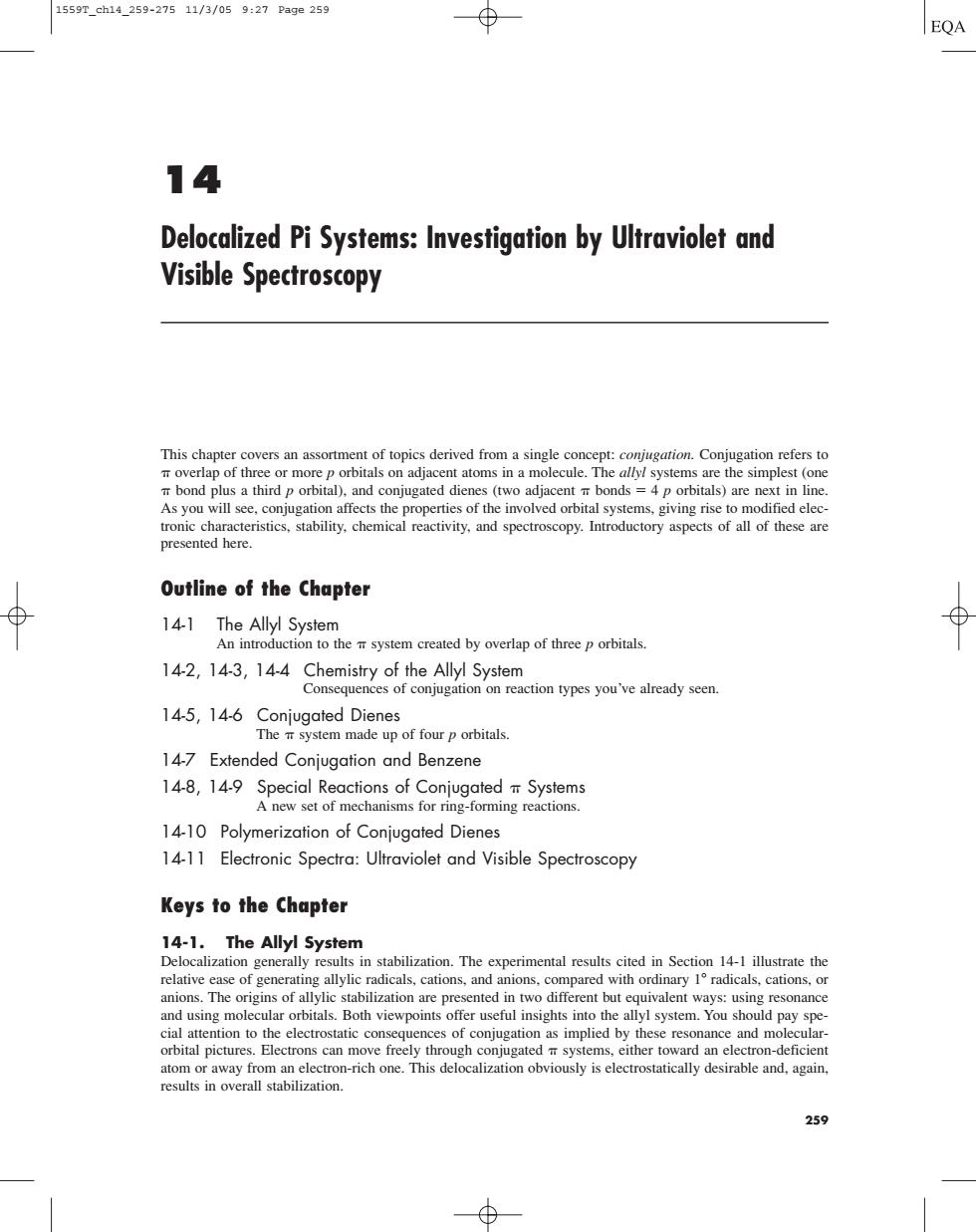正在加载图片...

1559T_ch14_259-27511/3/059:27Page259 EQA 14 Delocalized Pi Systems:Investigation by Ultraviolet and Visible Spectroscopy This chapter c t:coniugation.Con ation refers to tronic characteristics.stability.chemical reactivity.and spec troscopy.Introductor aspects of all of theseare presented here. Outline of the Chapter 14-2,14-3,14-4 Chemistry of the Allyl System Consequences of conjugation on reaction types you've already seen 145.1 147 Extended Conjugation and Benzene 14-8,14-9 Special Reactions of Conjugated T Systems A new set of mechanisms for ring-forming reactions. 14-10 Polymerization of Conjugated Dienes 14-11 Electronic Spectra:Ultraviolet and Visible Spectroscopy Keys to the Chapter 14-1.The Allyl System Delocalization generally resu and using molecular orbitals.Both viewpoints offer useful insights into the allyl system.You should pay spe- 14 Delocalized Pi Systems: Investigation by Ultraviolet and Visible Spectroscopy This chapter covers an assortment of topics derived from a single concept: conjugation. Conjugation refers to overlap of three or more p orbitals on adjacent atoms in a molecule. The allyl systems are the simplest (one bond plus a third p orbital), and conjugated dienes (two adjacent bonds 4 p orbitals) are next in line. As you will see, conjugation affects the properties of the involved orbital systems, giving rise to modified electronic characteristics, stability, chemical reactivity, and spectroscopy. Introductory aspects of all of these are presented here. Outline of the Chapter 14-1 The Allyl System An introduction to the system created by overlap of three p orbitals. 14-2, 14-3, 14-4 Chemistry of the Allyl System Consequences of conjugation on reaction types you’ve already seen. 14-5, 14-6 Conjugated Dienes The system made up of four p orbitals. 14-7 Extended Conjugation and Benzene 14-8, 14-9 Special Reactions of Conjugated Systems A new set of mechanisms for ring-forming reactions. 14-10 Polymerization of Conjugated Dienes 14-11 Electronic Spectra: Ultraviolet and Visible Spectroscopy Keys to the Chapter 14-1. The Allyl System Delocalization generally results in stabilization. The experimental results cited in Section 14-1 illustrate the relative ease of generating allylic radicals, cations, and anions, compared with ordinary 1 radicals, cations, or anions. The origins of allylic stabilization are presented in two different but equivalent ways: using resonance and using molecular orbitals. Both viewpoints offer useful insights into the allyl system. You should pay special attention to the electrostatic consequences of conjugation as implied by these resonance and molecularorbital pictures. Electrons can move freely through conjugated systems, either toward an electron-deficient atom or away from an electron-rich one. This delocalization obviously is electrostatically desirable and, again, results in overall stabilization. 259 1559T_ch14_259-275 11/3/05 9:27 Page 259��